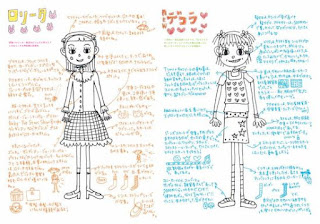As pride month comes to a close, it's time for a super special ~pride post~. As always, these are my personal thoughts, and not representative of the communities as a whole.
Lolitas are, undoubtedly, extremely gay. But why?
History
Music
Music has a history of gender fluidity (just consider Prince), but visual kei bands take this extremely seriously. Mana-sama epitomizes genderfuckery in a visual kei context, being a man who presents in a primarily feminine manner, even refusing to speak in public as not to ruin the doll-like illusion. Gender ambiguity and genderfuck is inherent to the visual kei aesthetic, and as many early gothic lolitas were 'band girls' (intense fans), it was natural that this carried through.
Moreover, at least in America, subculture and queerness (and often, yes, kink) are deeply intertwined. Counterculture has continuity-- nonconformity in one aspect lends itself to nonconformity in another. I'm only repeating what I've heard from older goths, but this article goes into it a little bit.
 |
| Mana-sama in Moitie's Nun OP |
Street Fashion
Early lolita outside of concert settings was focused less on mimicking a certain silhouette and more about overall cute aesthetic. Additionally, it can be considered a form of aomoji-kei, or blue letter style.The name comes from the fact that magazines for girls trying to appeal to men used red letters (akamoji) for their covers, whereas magazines for girls that appealed primarily to other girls used blue letters (aomoji). For more on aomoji vs akamoji, read this post. Kera and Fruits were both considered aomoji, although they soon utilized other colors for their titles.
Aomoji-kei is inherently tied to the idea of the female gaze, which focuses on girls' reactions and disregards the male gaze. Though not revolutionary or inherently rejecting all men, this does put women at the forefront, and with it, homosocial friendships. Although not all homosocial friendships are inherently queer, they do give more room for sapphic romance. There is significant crossover between magazine and concert audiences, but the centering of the reader in the first and the performer in the latter makes them function differently.
 |
| Kera 7 (4/1997) guide to lolita |
 |
| An illustrated guide to lolita (left). |
Modern Queer Identities and Lolita
Gender
"Feminine not female" is the operative term for many gender non-conforming lolitas. Lolita is such an abstraction away from conventional womanhood that many trans male and nonbinary lolitas, who might feel uncomfortable presenting in a normatively feminine way, feel less so when wearing the decidedly unusual style. Lolita is exaggerated femininity to the point where is bears no resemblance to typical male or female presentation, creating a presentation all its own. As a nonbinary person myself, I enjoy how lolita disguises my body. It allows people to enjoy frilly dresses for their own sake without other expectations.
Alternatively, I've noticed many transfeminine people embrace lolita as well. Although I am not transfeminine, I imagine that the ability to conceal many dysphoria-triggering features is probably a plus. I've also heard that Mana-sama, as a DMAB person who appears very feminine, can be inspirational for transfeminine and male lolitas alike. Lolita is also a safe space for adults to explore many other aspects of femininity without judgement or sexual connotations. Finally, lolitas are big on self improvement, development, and change, something which nearly all gender non-conforming people (or anyone with any maturity) can relate to.


No comments:
Post a Comment